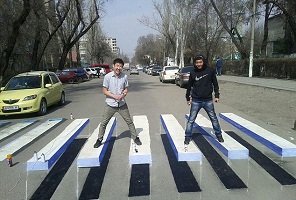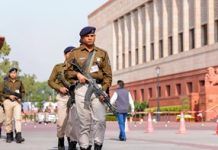More than 150,000 lives are claimed in India by road incidents each year and the latest Road Accident Report says 11,000 of them involve speed-bumps or potholes.
In an effort to combat these numbers, the transport ministry has proposed a radical solution – using 3D optical illusion paintings that act as virtual speed-bumps to encourage drivers to slow down. The idea comes a few weeks after the decision to remove all speed-breakers from highways across the country, which is ranked as one of the most dangerous places to drive in the world.
‘We are trying out 3D paintings used as virtual speed breakers to avoid unnecessary requirements for speed breakers,’ Nitin Gadkari, the Union Road Transport and Highways Minister, shared in a Tweet. The optical illusions aim to encourage drivers to slow down automatically, instead of whizzing over raised bumps that can fling people from their vehicle. Last month, India put in the order to have all speed breakers removed from the country’s highways due to its high number of incidents, say reports.
Officials noted that many areas local authorities are constructing road bumps or speed breakers to check vehicular speed despite necessary guidelines being in place.
‘This is undesirable, as the function of national highways is to facilitate movement of traffic. Speed breakers can be a source of serious hazards and accidents to the fast-moving traffic,’ they said. The Centre plans to try out Gadkari’s solution on a few highways as an experiment. ‘We will test it out in a couple of highways at one or two points. If it doesn’t cause any problem of road safety, we can experiment with it further,’ National Highways Authority of India Chairman Raghav Chandra said.
Implementing optical illusions as speed breakers was first used in the US city of Philadelphia in 2008 in the same attempt to combat aggressive driving. ‘The goal is to change the mind-set,’ Philadelphia’s chief traffic engineer Charles Denny said. ‘The driver sees this in the roadway, and they think that it’s some protrusion up out of the roadway, and not a perfectly flat surface. So they slow down before they drive over it.’








